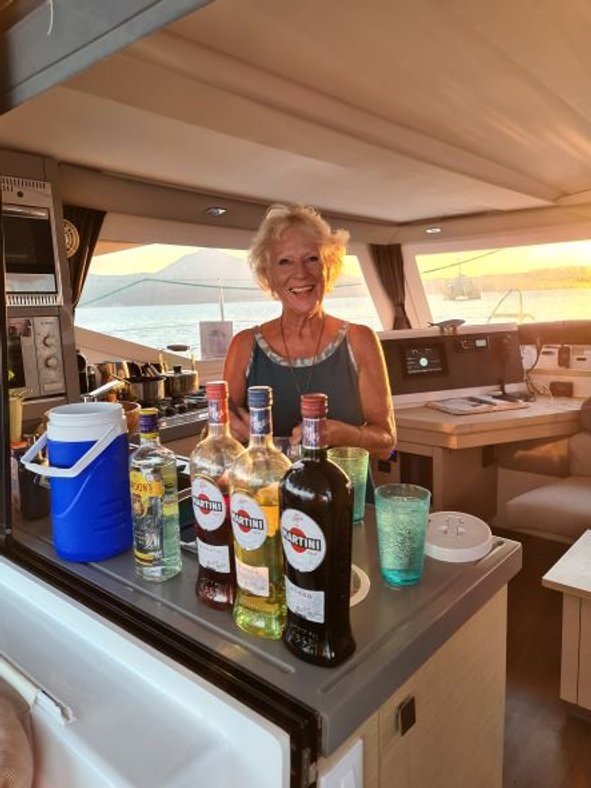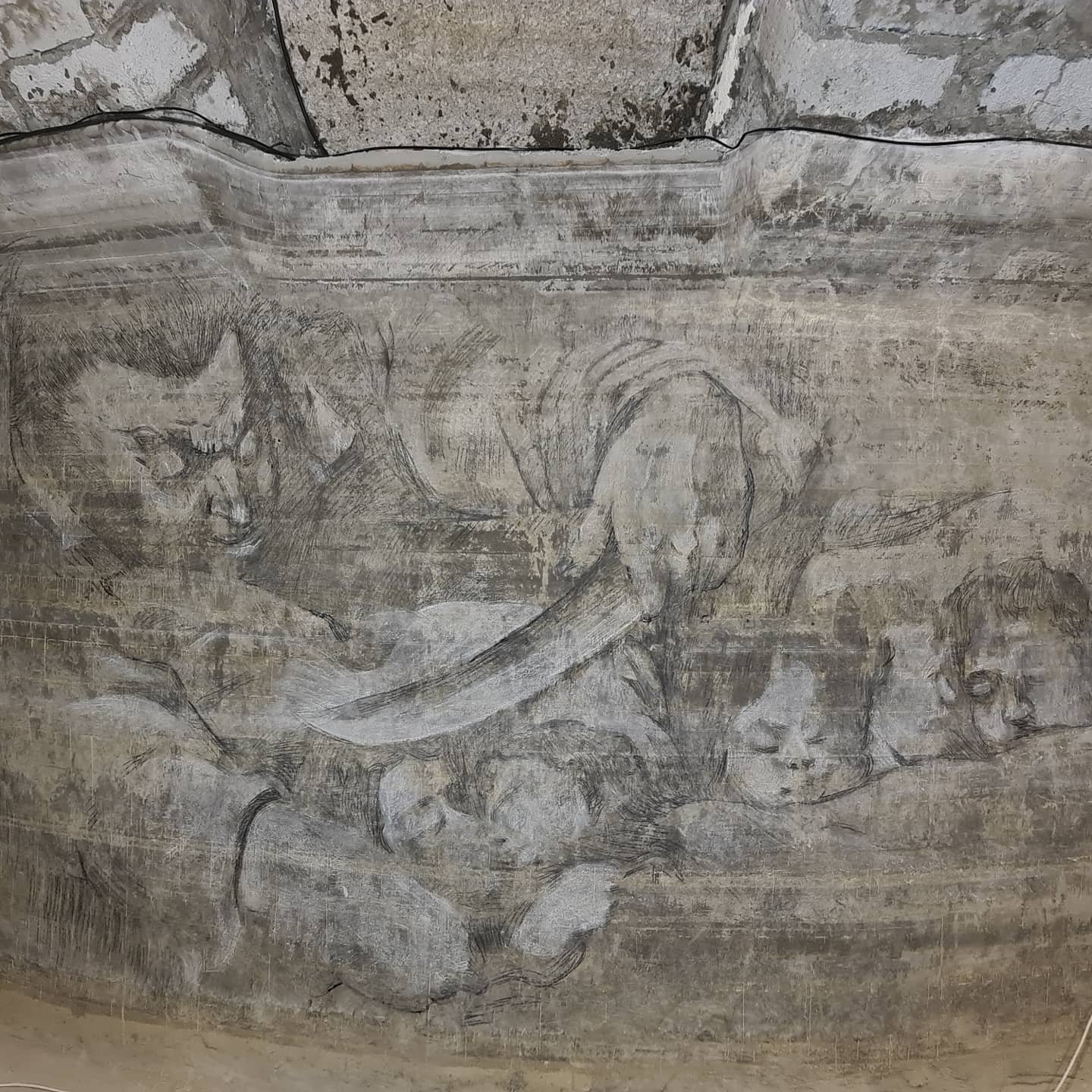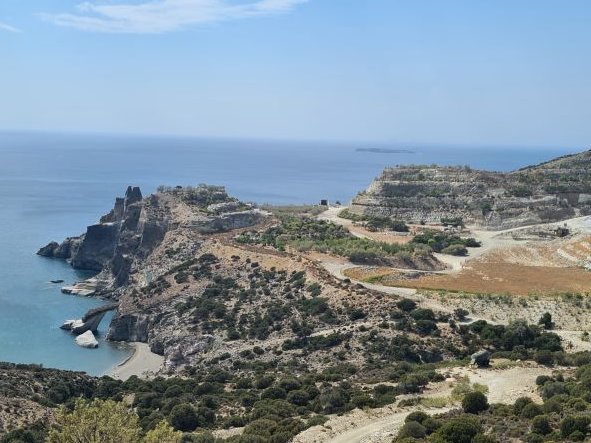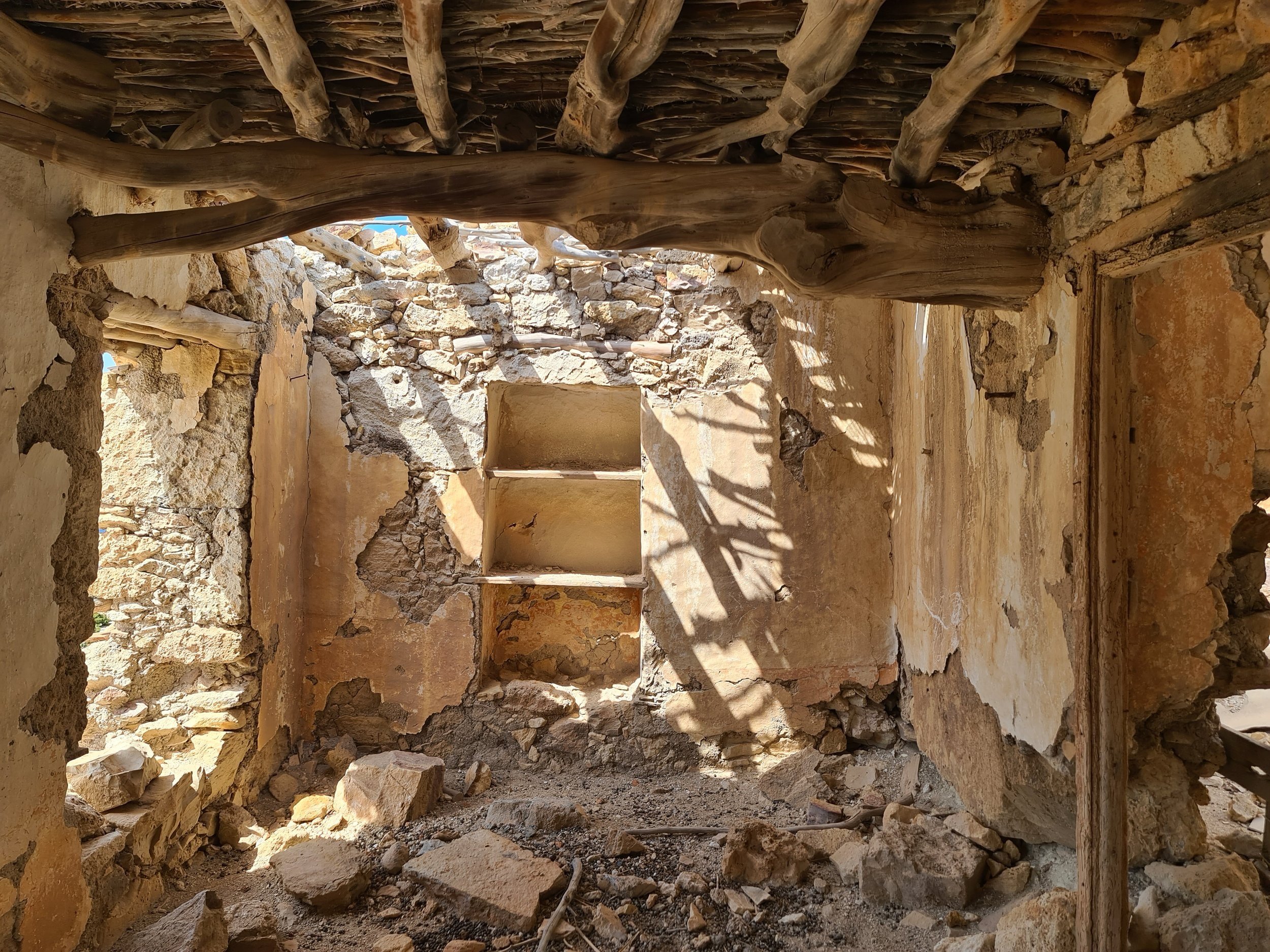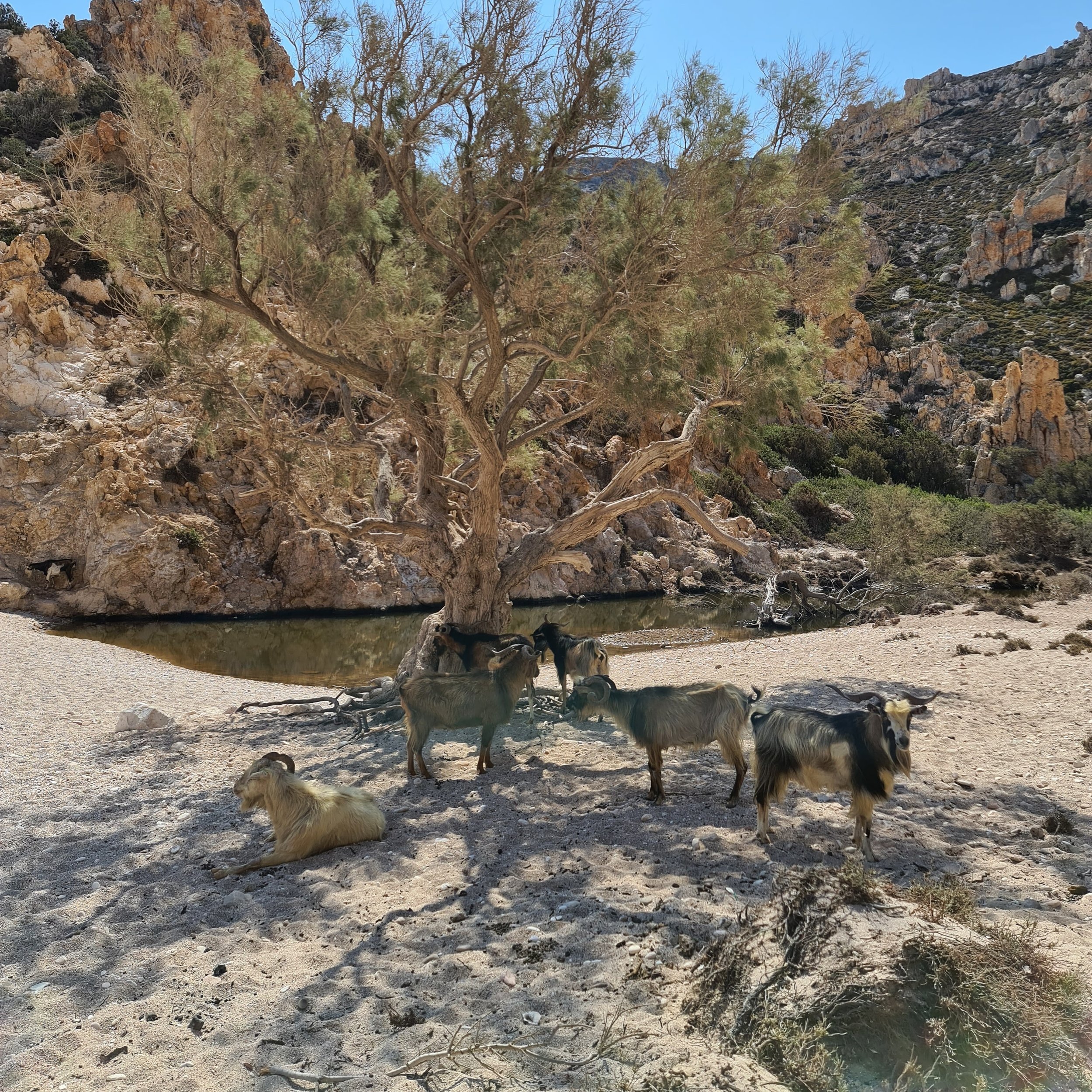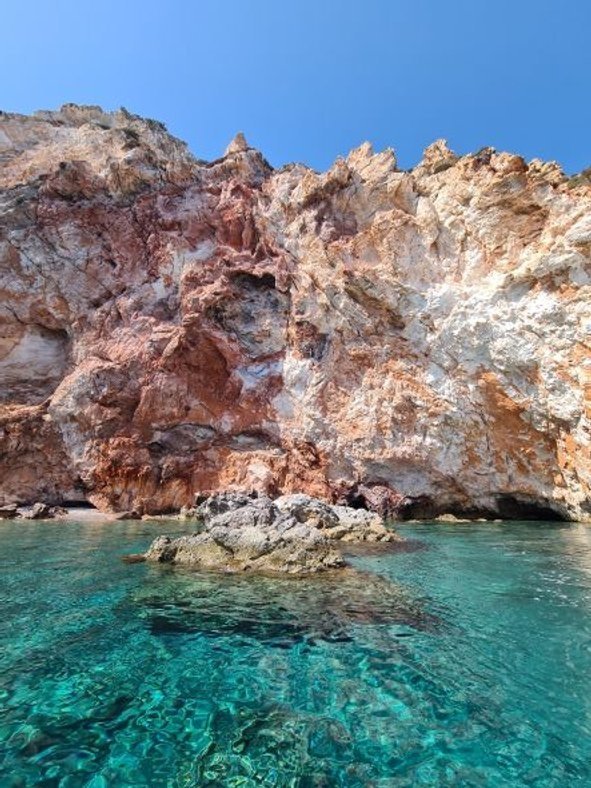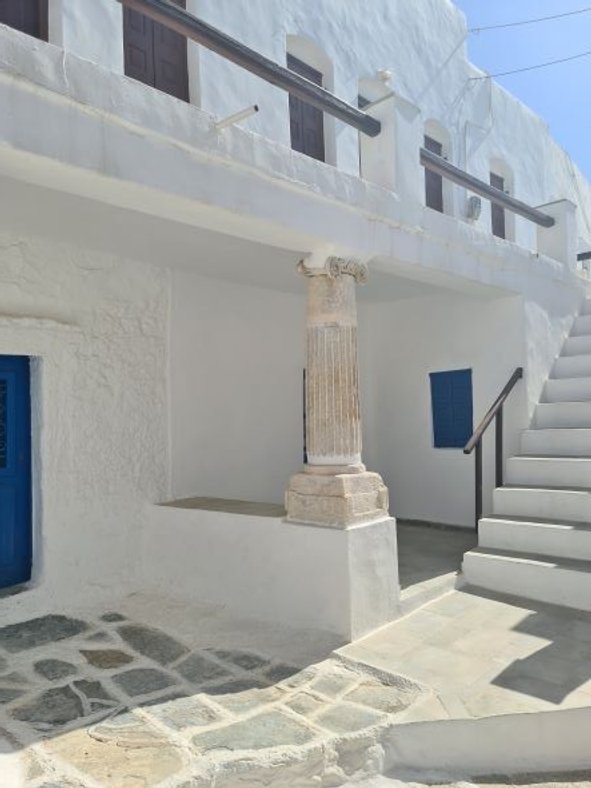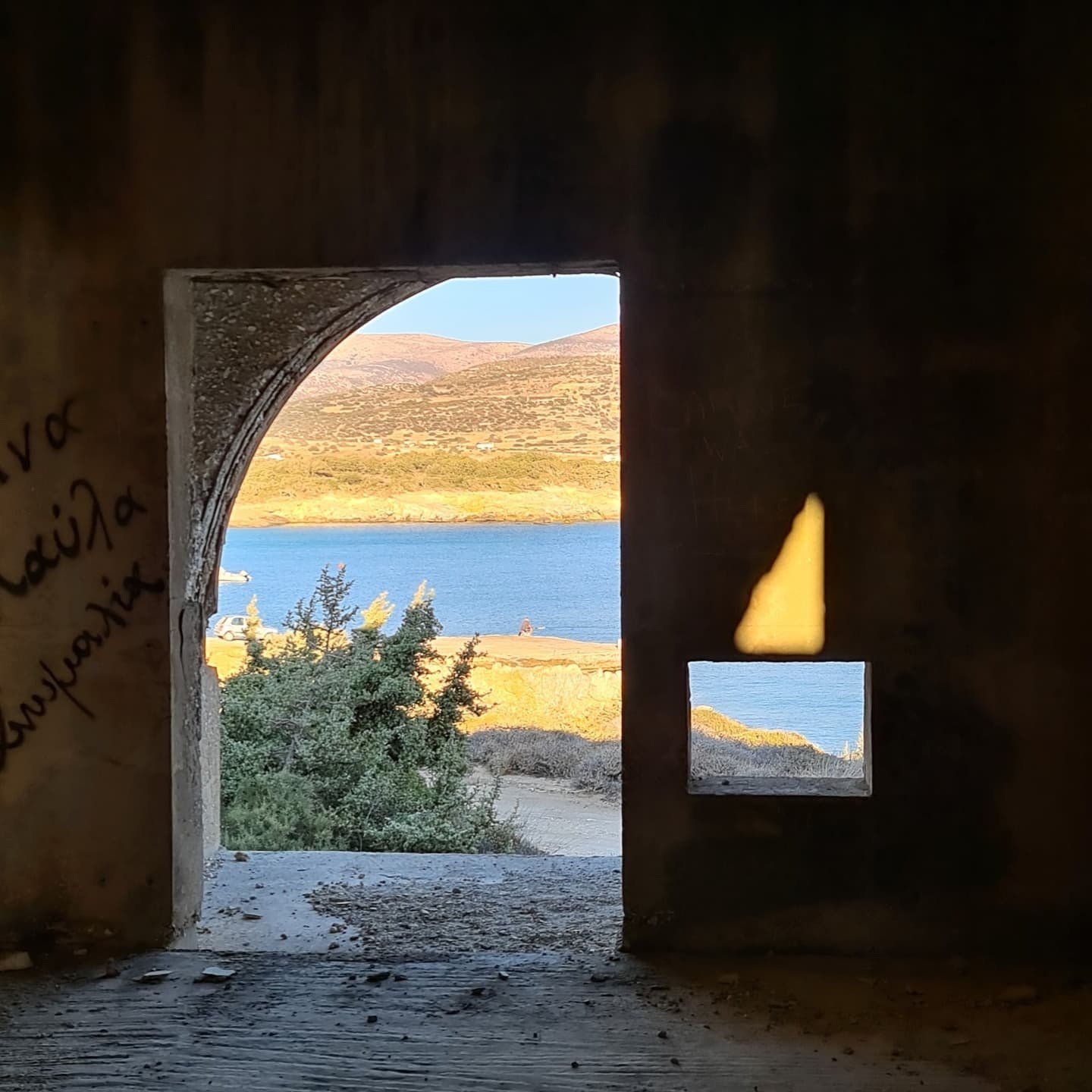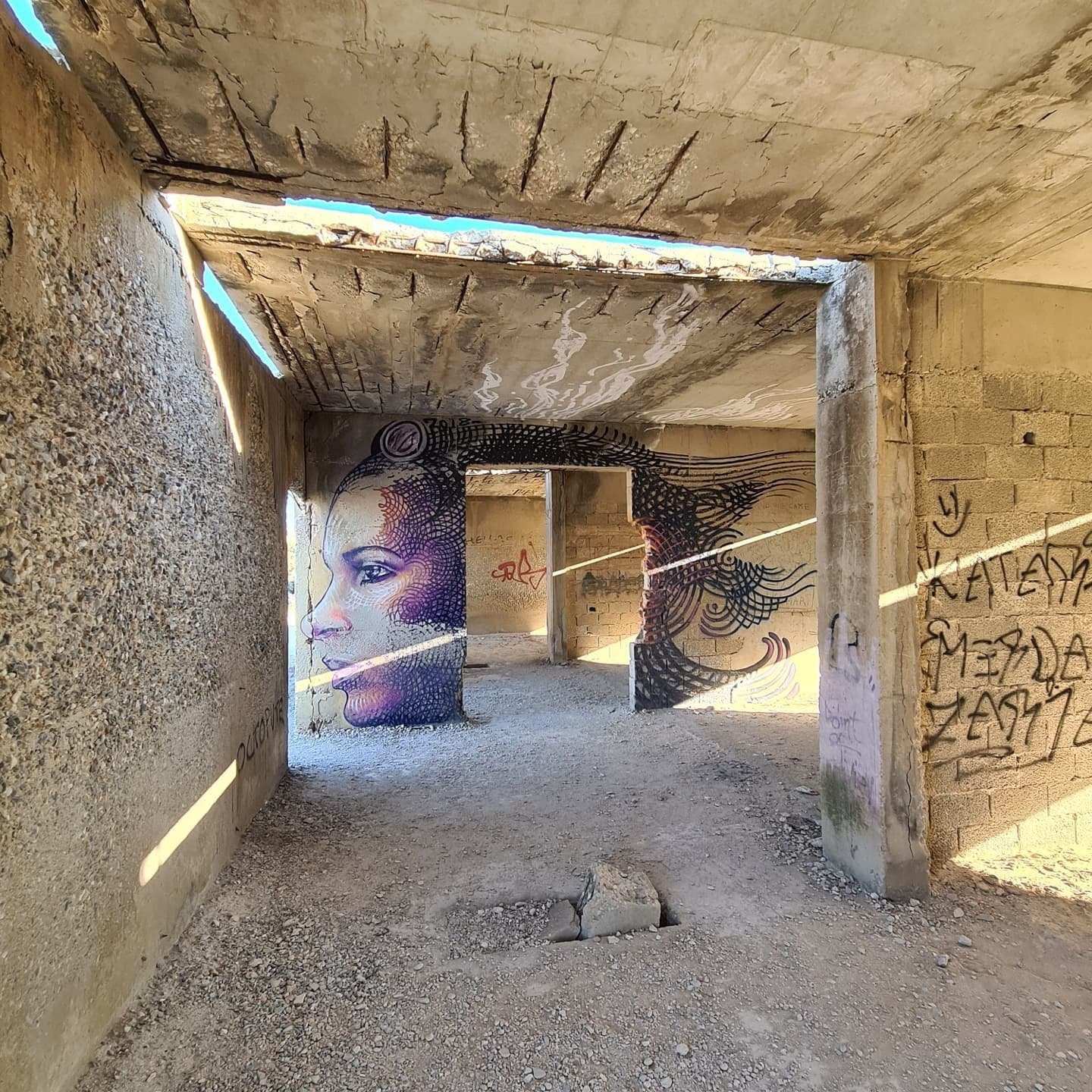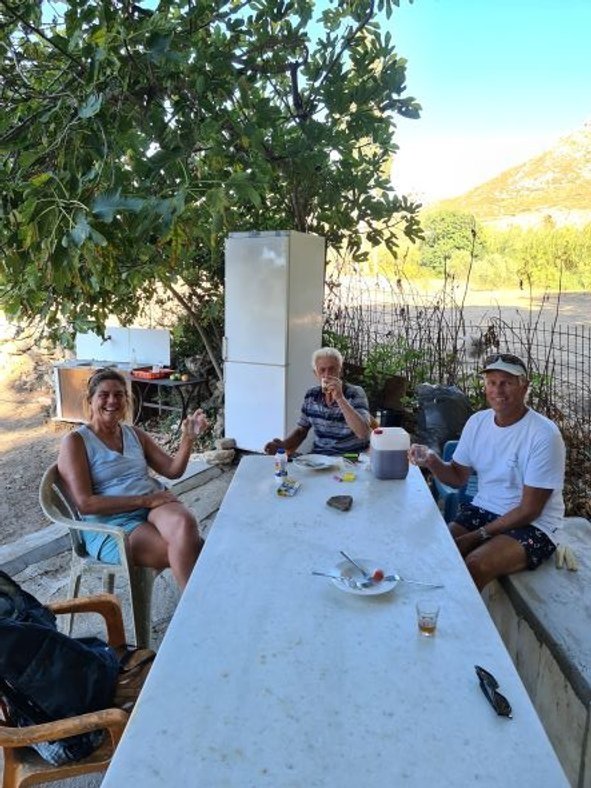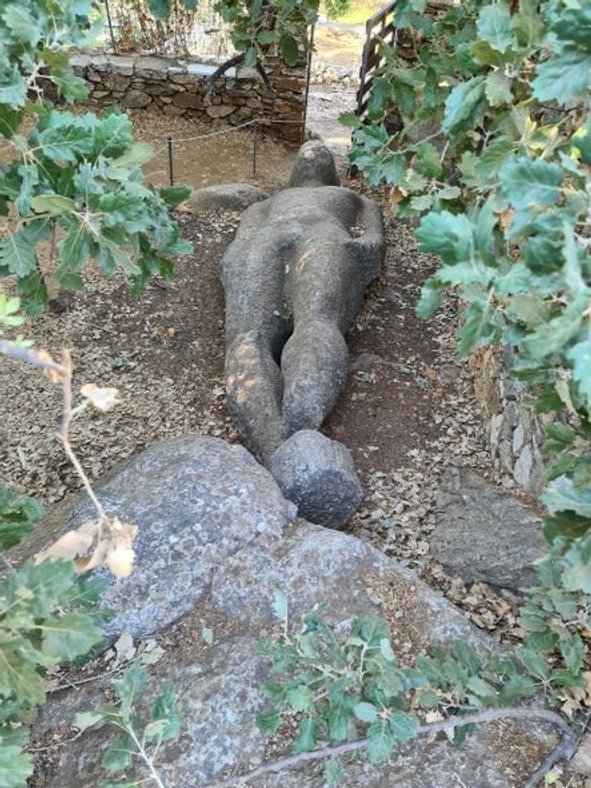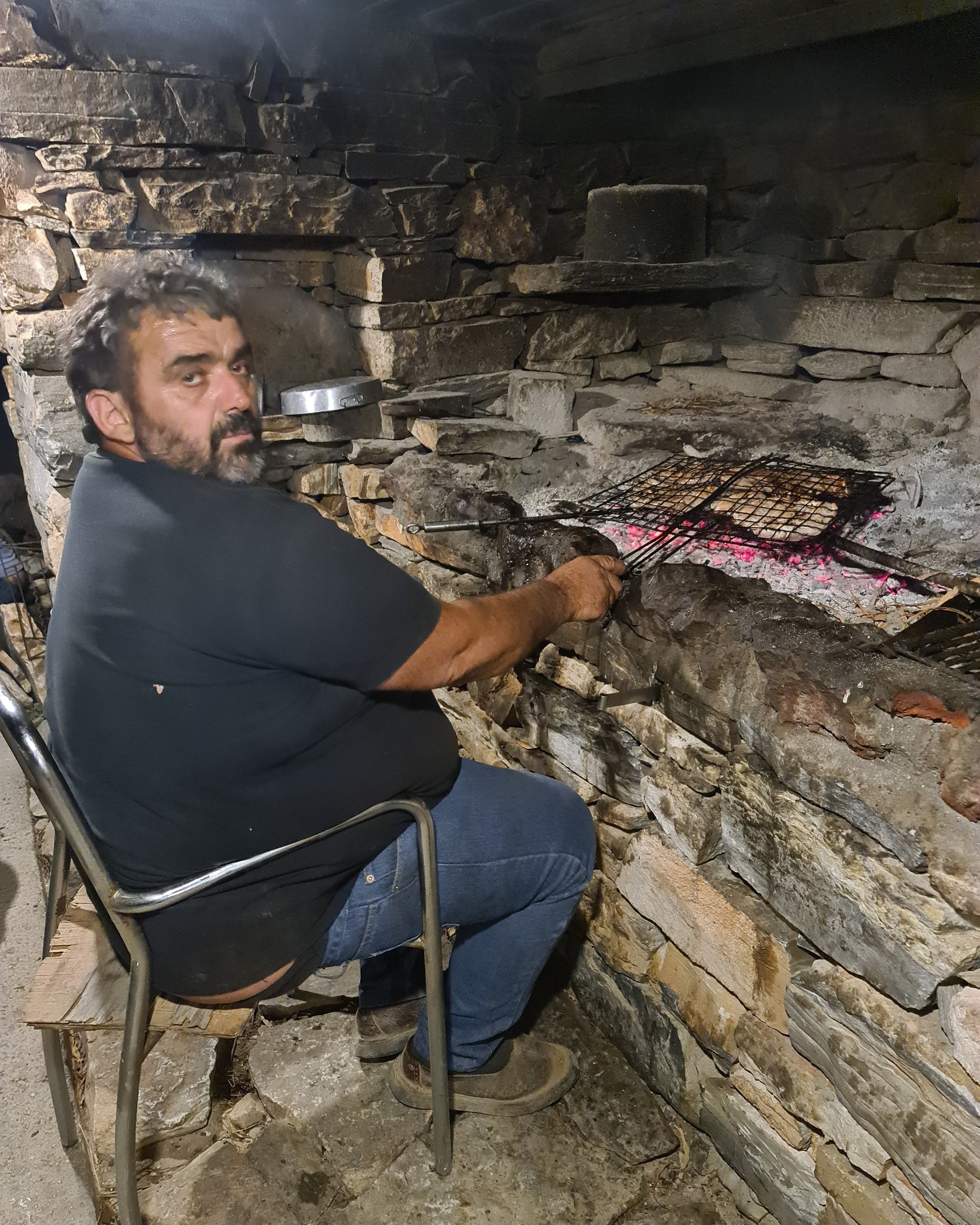Greece - Cyclades - Caves & Colours
Setting sail into a glorious sunrise we bid adieu to Mon Desir, arranging to catch up at the end of the day. Five hours into our voyage from the Peloponnese to Milos we caught another tuna, 6.5 kg and, luckily, had just taken our main down, sailing and fishing don’t always go smoothly. Then with two hours to go before we reached the main town of Adamantas on Milos, we responded to a Mayday call 6 nm south of us. Recognising Carol from Megan on the VHF it appeared that Richard had fallen and knocked himself out on the chart table. Using VHF, AIS and cellphone we turned south and coordinated assistance with Mon Desir, superyacht Solemate and the Hellenic Coastguard, first assessing the situation and reassuring Carol, then redistributing crew between us and the Mon before sailing to Adamantas in convoy, arriving in darkness to offload Richard and anchor Megan; it had taken 14 hours. The hardest part was getting people on and off boats, it was a choppy sea and Megan is a monohull but our trustworthy tender and captain ensured it all went smoothly, by that I mean no-one fell into the water or got hurt. An interesting note, a fishing boat also turned up to the rescue to assist and was most insistent that they help. They were not needed but stayed around yelling across the water for quite a while before finally leaving. We were perplexed but found out later that the Greek government incentivises local fishermen to assist in a Mayday by paying them a day’s catch.
Back on Milos, we celebrated in martini style before farewelling our crew - COVID test negative, they were off to Paros for a week, making good use of the ferry service which runs between all the Cyclades. We also discovered that we were now radio stars - Kiwis, Greg and Connie from Waiata had listened to the rescue over the VHF and being anchored close by, tendered over to introduce themselves, nice. With the crew on shore leave, we decided to do a bit of exploring on our own, starting with a nighttime visit to the WW2 bomb shelter turned exhibition space, cool and creepy. Having circumnavigated Milos by boat in July, we were keen to rent a car, preferably one we could take to places yet unseen, so eight oxis (nos) later (Milos was still touristy busy) we secured a €70 4WD which we could drive anywhere. We had discovered on our previous visit, most rentals forbid driving the large areas in the west and south, and it quickly became apparent why. We spent seven hours driving precarious, rough, rocky tracks in search of old obsidian deposits, looking down on bays we had anchored in, winding through a colourful mined landscape to Cape Vani and an old manganese mine. Lying on the NW coast the mine was operational from 1898-1928 and the workers used to stay there the whole week, sailing home to Adamantas in fishing boats after finishing their Saturday shift, and if the weather turned bad and the sea got too rough, they had to walk home, incredible. In the end-of-day light, words can’t capture the dramatic colour and form, it was stunning.
We didn’t think this area could get even more visually stunning, but we discovered, yes it can, as we anchored off Polýaigos, the island of many goats, population 0 and many goats - cliffs a spectrum of earthy colours and caves, with Elanora’s falcons wheeling in the setting sun.
Two hours gentle sail across to barren Folegandros, population 765, where we had arranged to meet Michael and Marita from Lets Dance - what a great evening sharing stories over a quiet drink or two and dinner on the new FP Elba 45, such a glam catamaran! Having not read anything compelling about Folegandros, it came as a pleasant surprise. Good anchorages within an easy tender to the port Karavostasi and from there an easy busride up to the chora. The chora is utterly charming. We have been to many chora and this is really up there (no pun intended), beautifully kept dwellings built into the 13th century kastro, some on a cliff edge, narrow alleys, tree shaded squares and from there, a good ten minute leg stretch up to the Church of Panagia providing superb views of the chora, sea and barrenness. And Chrysophilia - a large cave ten metres above sea level on the north coast. It proved exceedingly difficult to tie up the tender, even though we had an offshore breeze, it is too deep to anchor and the rocks are too sharp to go alongside, so it was a solo mission, best mate Cate onwards and up a narrow, steep rock staircase to a massive cave with old Roman baths, stalactites, goats and pigeons, just awe inspiring. I only read later that you are not encouraged (allowed) to go there, oops, biggest regrets were that Skip couldn’t join me, I didn’t take a torch and I didn’t see the hundreds of names written in the 4th century BC on the walls.
Up to Sifnos, population 2,625, we anchored in a small one taverna bay just below the kastro, green schist cliffs and good snorkelling, big schools of bream and garfish as well as my favourite damselfish. Unfortunately, we had just missed the mark and anchored in a weedy patch, when the wind changed 180 degrees at 0200, we dragged, such a drag. Luckily, the moon was just off full so plenty of light to re-anchor in. Feeling tired from our broken sleep, we dragged ourselves up to the kastro and across to the picturesque Eftamartyres Chapel (Chapel of the 7 Martyrs) and it was worth it, it always is - every place has a special something, in this instance it was interesting to see old sarcophagi and columns used in a modern setting as well as the local schist used in walls, paths, and streets, a very green town.
Antiparos, population 1,211 – we were last here in Sept 2019, a large sandy sheltered bay, good 4m holding between Despotiko island and Antiparos. We had noted signs of planned development in 2019 and despite COVID it appears to have progressed - private white castles on low lying parched hills. An afternoon tender along the cape of granite ravines, lunar limestone ledges and explorable caves was followed by a revisit dinner at Captain Pipinos - superb shrimp saganaki, chicken fillet and fried courgette chips €42 and worth every euro.
Heading for Naxos we called in for a night on Paros, population 13,715 and in anticipation of 30+ knot NNW meltimi gusts, stuck to the south coast to rendezvous with the crew. They had had a lovely time, and we were pleased to have our evening card game buddies back - Aana “Artemis goddess of animals” and “Chief Entertainment Officer” Tommy.
Naxos, population 18,904 and another delightful surprise. Anchoring again on the south coast, our first wander was through a 1960s abandoned hotel, wild drawings in the golden evening light. The next day we rented a car €35 from Agia Anna on the west coast and spent eight hours exploring the middle of the island. From the Temple of Demeter in rolling autumn harvested fields, we drove up to the 19th century Vallindras distillery in the old chora Chalki (sampling kitro liquor made from Citrus medica leaves) and lunched in the marble town of Apeiranthos, reaching 730 metres before winding down to the sea, and east coast Moutsouna. Moutsouna is a small, quiet seaside village but was once a thriving port, receiving abrasive emery (corundum) via skytrains from the mines to be loaded onto ships for distribution throughout the western world. The skytrains operated from 1930-1982, now blackened skeletons marching down to the sea.
Heading back across Naxos, magnificent marble quarries on the skyline, we stopped in a lush spring fed valley to have a look at unfinished 6th century BC kouros and an equally ancient aqueduct. Kouros are sculptures of nude male youths and this one was missing appendages – abandoned when the aforesaid broke off either in construction or transit. Arriving in the valley we came upon a magnificent garden hidden in the trees – every vegetable and fruit you can imagine (well perhaps not quite, but you get my drift). Family land for generations, Stefanos comes here after work every day, and tends to his “hobby,” stopping for a light meal of freshly picked tomatoes, homemade cheese, and wine. Which he shared with us under rustling plane trees, in the afternoon warmth…
Still feeling the warmth from our encounter with Stefanos, on our third day, further along the coast we rescued goat farmer Nikolaos’s knife from the sea. With little common language between us he invited us to his family’s taverna for dinner that night; the very rustic Traditional Tavern Skampelas with an oral menu listing seven items. We partook of delicious simple food - chargrilled meat, salad, eggplant fritters and Naxian wine, drinks courtesy of Nikolaos, as was his fresh goat milk the next morning, mmm.
Note; Naxian marble was highly prized in ancient time, the lions guarding the lake on Delos are sculpted from Naxian marble.
We enjoyed our two weeks sailing back across the Cyclades, even though we had passed this way before it reinforced for us how much more there was to see, the sea is but one part of story and we had loved letting the land talk to us.


